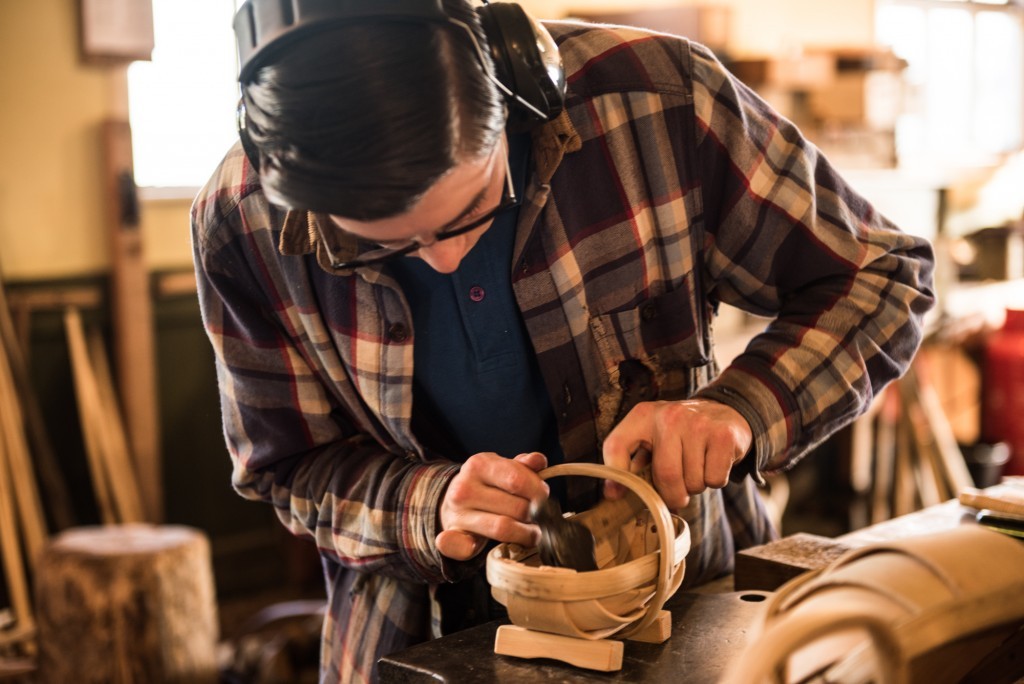Tel: +44 (0) 1323 871 640
Email: [email protected]
Tel: +44 (0) 1323 871 640
Email: [email protected]
The Cleaver uses a special axe, which is placed on top of the Sweet Chestnut pole (also known as a cooper pole or a Trug Bat) and this is hammered in with a wooden maul (also made of Chestnut). He then works the axe through the length of the pole, using the natural grain of the wood to split it in two. These halves are then cleaved again to produce smaller sizes which then go on for shaving as handles and half rims.
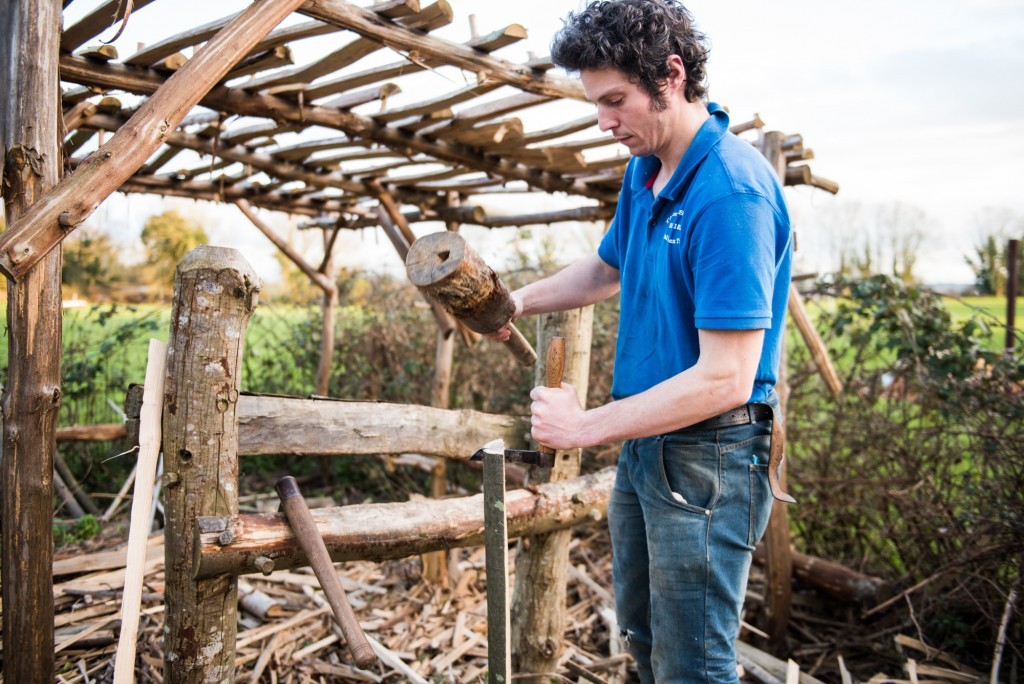

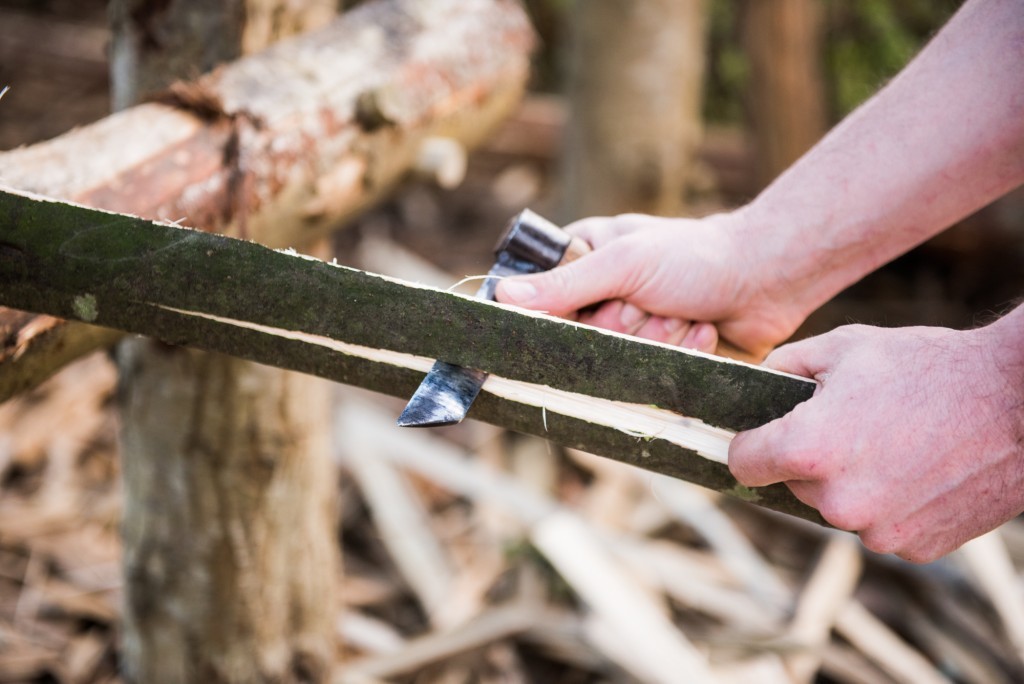
The Royal Sussex Trug handles and rims are shaved by the Craftsman on a “Shaving Horse”. They are shaved to the correct width and thickness using a Draw Knife, ready for steaming. There are many different shapes and sizes to remember and the Craftsman has to do all this work by eye alone. A very skilled job!

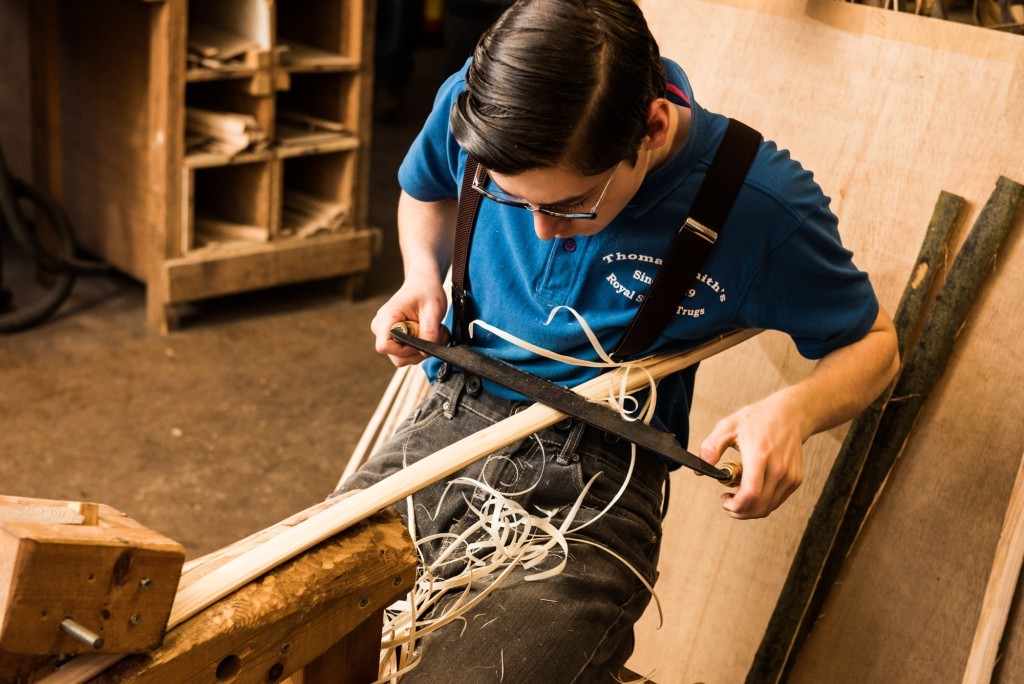
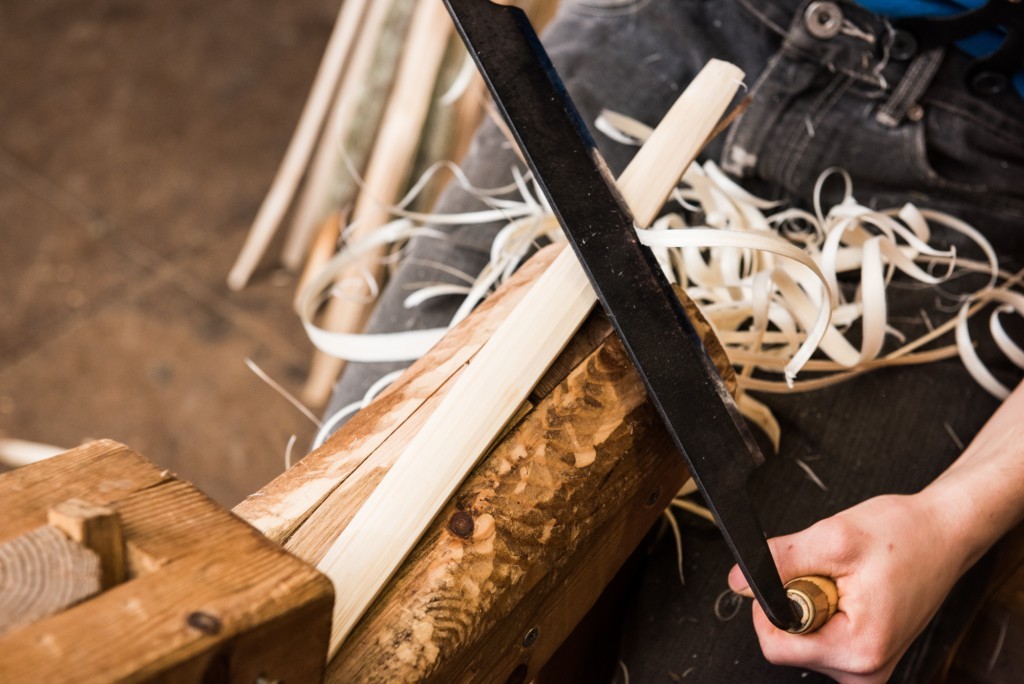
Our boiler is run on LPG and is used to raise steam for the Steamer. The chestnut is placed into the steamer, around which steam circulates freely (not under pressure), thus making the Chestnut pliable. It is then bent round the “former” to make the handle or rim. The Craftsman has only a few seconds to do this before the wood becomes stiff once again, so he has to be quick as well as skilled. The handles and rims are then nailed together to make the “frames”, which are then sent to the Maker to have the boards placed inside them.
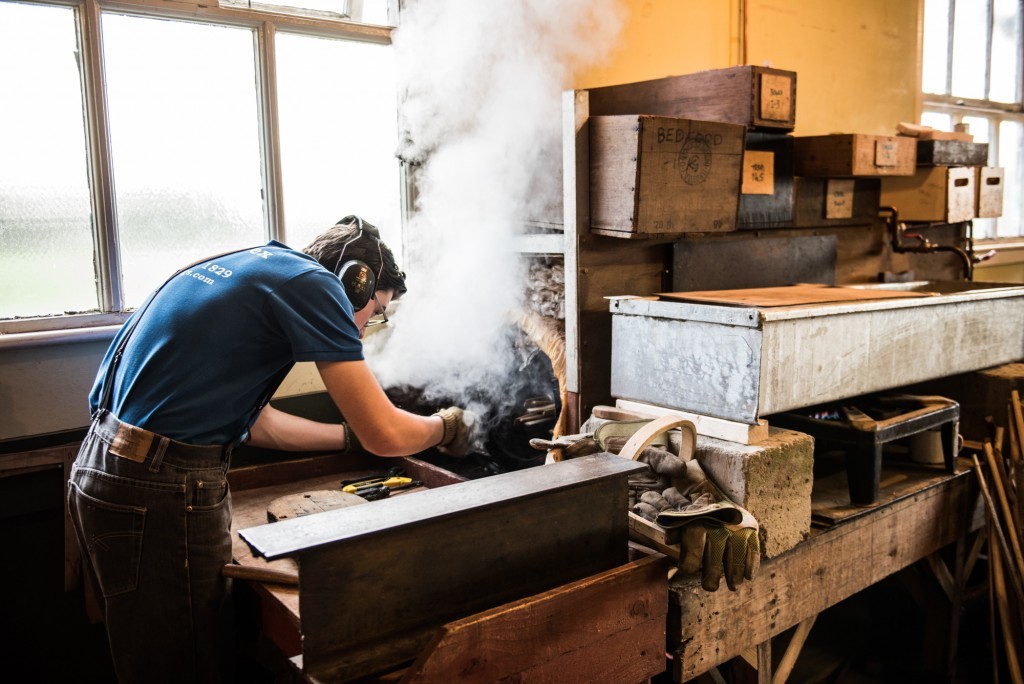
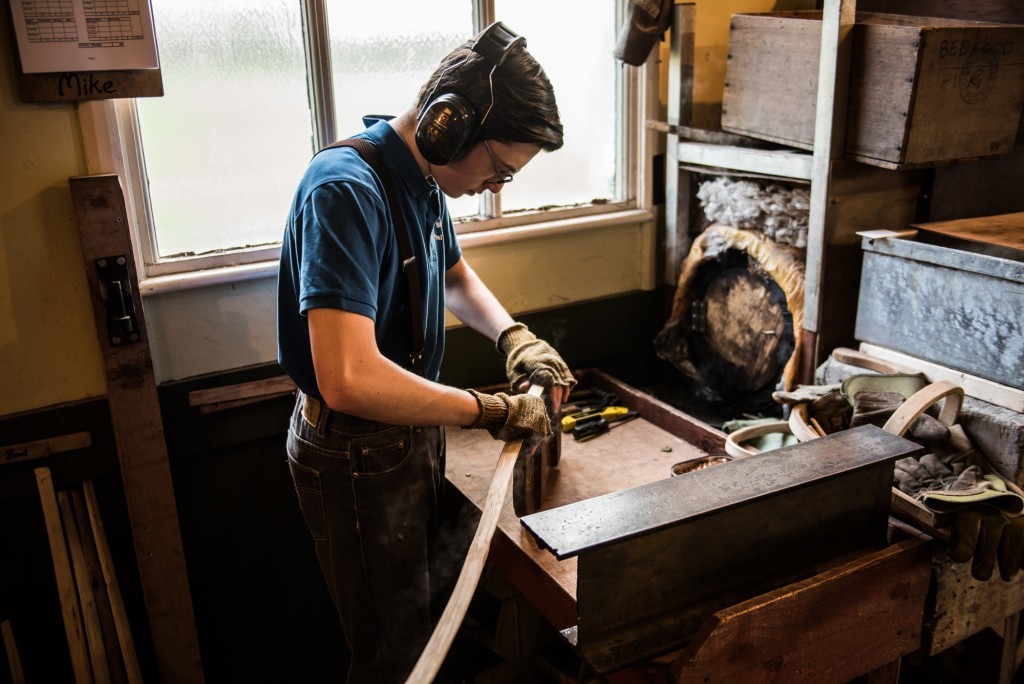
This is done sitting on a “Making Horse”. The Craftsman receives the frame and fixes the boards into it. The boards, made from re-cycled Cricket Bat Willow are either steamed or soaked in very hot water and are then bent on the ends before being sent to the Maker. This makes them springy and stops them splitting when they are shaped within the frame. The boards are placed inside the frame and fixed securely into position using solid copper tacks.


Once the Trug is made, the legs are nailed on to the bottom and the Trug is then ready to go for the final quality inspection before being signed by the craftsman, stamped and given a unique reference number on the bottom before being despatched.
